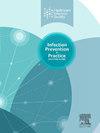Rapid implementation of a clinical decision-support workflow during the national blood culture bottle shortage
IF 1.9
Q3 INFECTIOUS DISEASES
引用次数: 0
Abstract
Background
The United States Food and Drug Administration recently announced a national blood culture (BC) bottle shortage; the exact date of restoration is still being determined.
Aim
Implement a workflow to mitigate the BC bottle shortage at our hospital.
Methods
We created the following clinical decision support workflow in electronic medical record to help mitigate BC bottle use: (a) limit to two BC in 24 hours, (b) only repeat BC if 72 hours have passed from the prior sets, (c) do not repeat BC for coagulase-negative Staphylococcus bacteremia when considered a contaminant (i.e., no implanted vascular device), (d) do not repeat BC for Streptococcus bacteremia, (e) do not repeat cultures for Gram-negative rod bacteremia unless an unknown source, immunosuppression, or clinical worsening.
Findings
Post implementation, our weekly average BC bottle use decreased to 29.5%.
Conclusion
Within three weeks of the BC bottle shortage announcement, we successfully deployed evidence-based BC restrictions in the electronic medical record (EMR), reducing our BC orders by 29.5%. We encourage others to consider and potentially replicate our workflow to contribute to diagnostic stewardship.
在全国血液培养瓶短缺期间快速实施临床决策支持工作流程
背景美国食品和药物管理局最近宣布全国性血液培养(BC)瓶短缺;具体恢复日期仍在确定中。方法我们在电子病历中创建了以下临床决策支持工作流程,以帮助减少 BC 瓶的使用:(a) 限制在 24 小时内进行两次 BC,(b) 只有在距离上一次 BC 已过去 72 小时时才重复 BC,(c) 如果认为凝固酶阴性葡萄球菌菌血症是污染物(即:没有植入血管装置),则不重复 BC、结论在 BC 瓶短缺公告发布后的三周内,我们成功地在电子病历 (EMR) 中部署了循证 BC 限制,将 BC 订单减少了 29.5%。我们鼓励其他人考虑并有可能复制我们的工作流程,为诊断监管做出贡献。
本文章由计算机程序翻译,如有差异,请以英文原文为准。
求助全文
约1分钟内获得全文
求助全文
来源期刊

Infection Prevention in Practice
Medicine-Public Health, Environmental and Occupational Health
CiteScore
4.80
自引率
0.00%
发文量
58
审稿时长
61 days
 求助内容:
求助内容: 应助结果提醒方式:
应助结果提醒方式:


